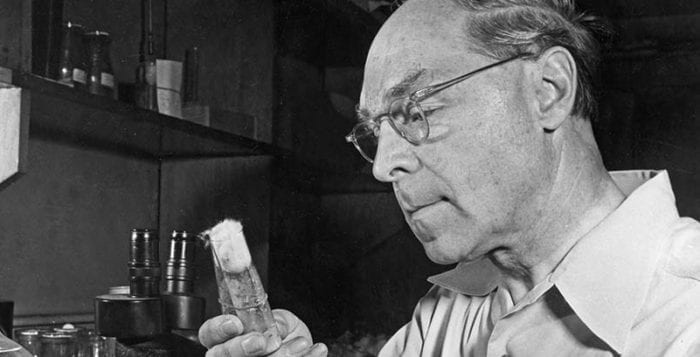By Elof Axel Carlson

My mentor, Nobel laureate Hermann Joseph Muller, described science to his graduate students as “the winning of the facts.” Three implications exist in that interpretation.
First, it is not easy to do science. It takes skills at using instruments to obtain facts, design experiments or infer connections among isolated facts. Second, the scientist may be in competition with alternate ways to interpret the same data. The scientist may have biases that were not controlled adequately in the experimental design, or the scientist may be a victim of wishful thinking. Third, science has implications for our lives that may be received with resistance or disbelief by those who prefer their advantages for the world as they are presently enjoying it.
A good example is the effort it took Muller to work out some findings about the gene. When he joined Thomas H. Morgan’s laboratory in 1912, the gene was just an abstract idea. Its chemistry was unknown. Morgan had just found that there were genes associated with sex and that genes were associated with chromosomes in the cell.
In 1913 Morgan’s student Alfred H. Sturtevant showed those genes could be mapped. In 1915 Morgan’s student Calvin B. Bridges showed cell division could be imperfect and an extra or missing chromosome may be present in a fertilized egg. Go fast forward about 50 years and in humans that explained why some children have Down syndrome (with three instead of two chromosomes for number 21 of 23 pairs of chromosomes).
Muller took 15 more years after joining Morgan’s laboratory before he worked out genetic stocks to do an experiment that showed X-rays induce mutations. That did not make many people in the health industries happy because most of the mutations induced by X-rays had harmful effects (loss of function).
After Hiroshima and Nagasaki, Muller’s findings interpreted cell death from broken chromosomes by high doses of radiation created radiation sickness in tens of thousands of people who lived in Hiroshima and Nagasaki when our atomic bombs exploded. During the Cold War, many legislators felt that concern over radiation exposure was a Communist plot to delay development of nuclear weapons and the need to test them in the atmosphere, at sea or on land. Muller tried to strike a balance between political fears and the need for radiation protection.
The debate over consequences of low doses versus high doses of radiation exposure is still ongoing. The values of military needs for new or renewed weapons dominate concerns over low dose exposure. Those in the nuclear reactor industries feel the permissible doses add expenses that are not necessary because they feel no mutations are produced at low doses.
The overwhelming number of experiments done to test radiation exposure is that it is proportional to dose or linear for thousands of roentgens to fractions of a roentgen. The experiments are difficult to do with low doses in mice or fruit flies. Fortunately, most dentists give a lead apron to patients before doing X-rays, and newer X-ray machines give a much lower dose to get even sharper images with better X-ray machines. Fortunately, most health providers protect themselves and their staff from exposure to X-rays and do not have to be in the same room with the patient.
Basic science provides knowledge we may not want to know. But it also provides knowledge we can use to protect ourselves. It is not usually the scientists who make these findings who prevail in how science is received or used by the public. The winning of the facts is often a struggle that may be ongoing for years or decades before consensus occurs.
Elof Axel Carlson is a distinguished teaching professor emeritus in the Department of Biochemistry and Cell Biology at Stony Brook University.





